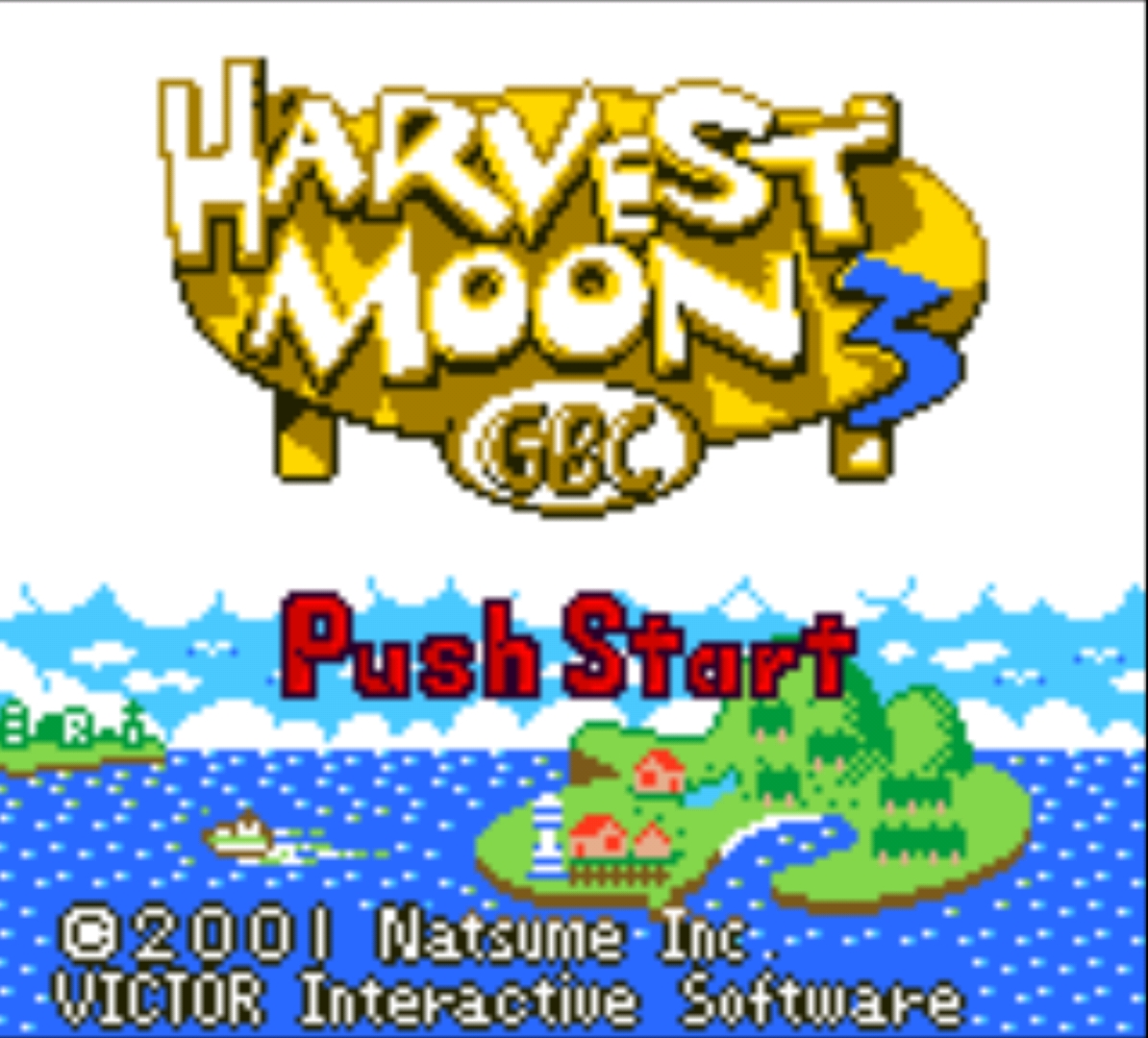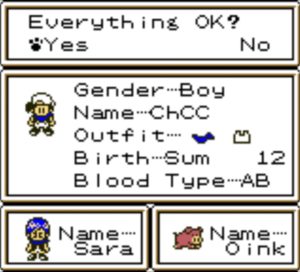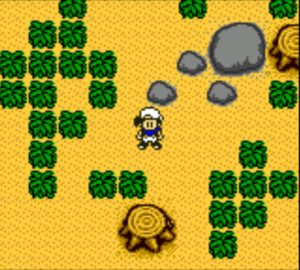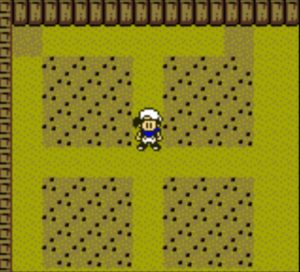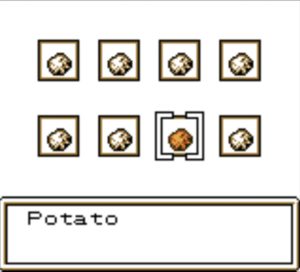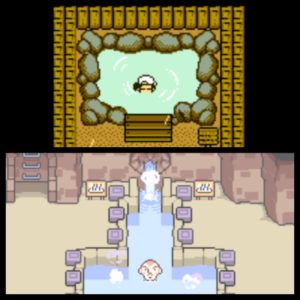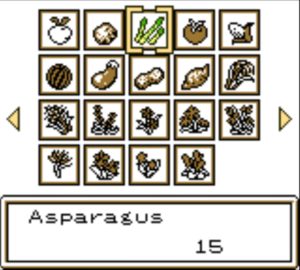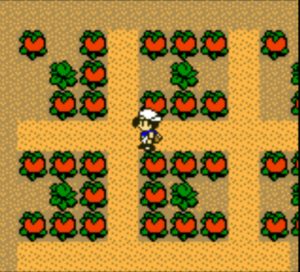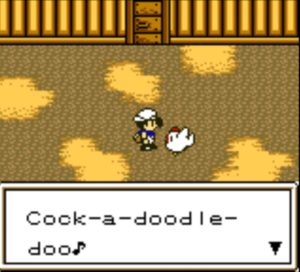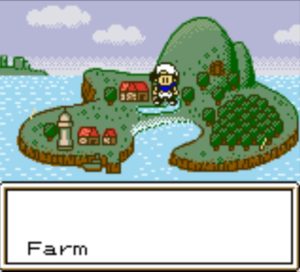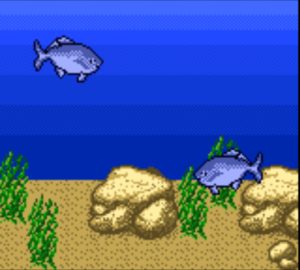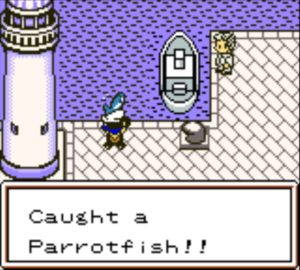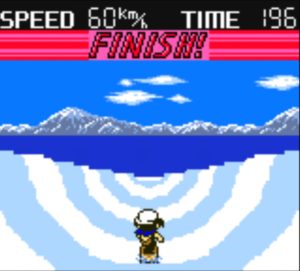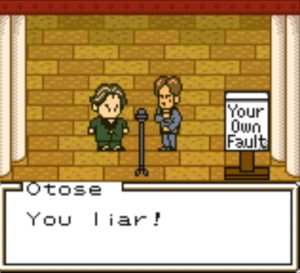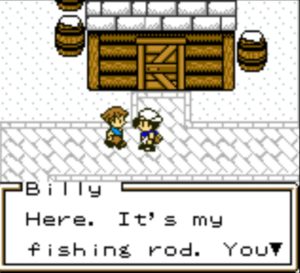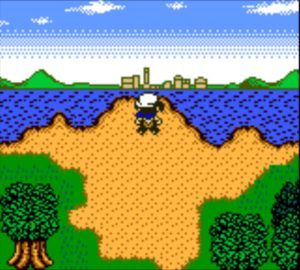Another Harvest Moon retrospective? Yes. It’s time.
Many moons (heh) ago, I played and reviewed Friends of Mineral Town (FoMT), and came away disillusioned. FoMT is on the books as a timeless classic, but… Then why didn’t I enjoy it? Had I outgrown Harvest Moon, period? Could even nostalgia no longer smooth over the experience? I had many fond memories playing the earliest Harvest Moons, and while part of me wanted to establish that I hadn’t played mindtricks on myself all these years, I was much too afraid to taint happy memories with modern skepticism, and chose to leave my Gameboy games alone. That is, until I decided to attempt some cartridge repairs, and while looking for spare parts stumbled upon Bokujou Monogatari GB3, my Japanese copy of Harvest Moon 3. Okay, universe. I read you loud and clear.
—
My name is ChCC. I was born on Summer 12. My best friend is an adorable teacup pig named Oink. I wear a blue scarf to go with white farming overalls, just because I can.
A few days ago, an elderly fellow named Heinz stopped by my successful megafarm in Flower Bud Village, bearing an odd request. A family friend of his, a young woman named Sara, had recently inherited an abandoned farm on a nearby island, and was in need of somebody to teach her the ins and outs of agricultural business. He argued that I desperately needed a new challenge in life, and was rather persistent I accompany him straight away, refusing to take “no” for an answer. So here we are, whisked away to this yet unnamed, poorly maintained old property, where I somehow find myself cohabitating with this young lady. And since you asked, my blood type is AB. We’re not going to get in some freak ploughing accident, are we?
Straight away, I like how Harvest Moon 3 presents itself as a direct sequel. You’re the same character, operating in the same universe as the previous game(s) in the series, transplanted to a new setting (always an island!), which is used as a tool to introduce novel and refined gameplay features. It’s a mini-persistent world before there were persistent worlds, and throughout HM3 you’ll find many NPCs referencing Flower Bud Village, which is evidently nearby. Of course, since this is a game from 1999, it’s not like storyline decisions or even items (such as furniture) carry over. But that’s okay.
In any case, our first order of business is to explore this rickety old ranch we’ve been given. (Fun fact: Harvest Moon is known as “Ranch Story” in Japanese). Its fields lie fallow, studded with rocks and gnarly tree trunks. A placid creek bookends our ranch in the east, a public road leading to the island’s sole village in the west, and tall wooden fences in the north and south. There’s spacious farm buildings / barns to house flocks of sheep, herds of cows, and broods of chicken, with plenty of pastures in need of freshly-sown grass. A grain silo holds animal fodder, a storage shed fresh produce, and what looks like a silted-over hotspring will soon soothe our aching body, once we’ve finished returning the ranch to a workable state.
Harvest Moon 3 follows a familiar routine: it expects us to found our business on seasonal crops and woodland forage, and gradually work our way up to animal ownership. Sara will be a great help in rearing and raising livestock, but until such time, the burden’s on us to get this farm off the ground. Since we’re on an island, all of our supplies will have to be sourced from the mainland, which means travelling biweekly trips by ferry to stock up on seeds and equipment.
Right now, it’s Monday, 1st of Spring, and the next ferry isn’t until Thursday. Mind you, the island is so close to mainland shores we could easily cover the distance in a canoe, but I suppose such is not the farmer’s way. Or perhaps the waters are treacherous. In any event, we have no seed packets to speak of, so after milling about town getting to know our fellow islanders, we spend some days preparing farmland for the planting of crops by cutting down tree stumps, chucking stray rocks in the river, and clearing weeds and bushes with a scythe before hoeing out several 3×3 plots. Then come Thursday, we pull out Uncle Bob’s 1000G secret savings stash from the fireplace – thank goodness its springtime and we’re not using it to heat the house! – and head for the ferry crossing. Captain Kirk (…I know) is waiting for us there, and without much ado shuttles us across the narrow channel to the mainland dock.
The mainland is home to most or the game’s diversions, such as a theatre, an aquarium, and a shopping mall. For now, though, we’re interested in the Farming Store, the lone vendor of seed packets in this game. Immediately we make a colossal mistake by investing our savings into asparagus seeds. Presented as the logical choice, they’re never worthwhile no matter which way you slice it. As I was about to find out, they have the longest growing cycle of any crop (9 days), which is two days more than potatoes, and offer a measly 10GP/crop additional profit. This doesn’t offset the additional cost of asparagus seed bags (320G vs 160G for potatoes), and since we don’t yet have a scarecrow to protect crops, many (more) are going to get eaten by birds. The net profit/day, if you wish to make such calculations, is rather abysmal. But having spent our wallet clean we’re stuck with them for now,1 It’s not possible to sell seed packets in this game. so we sow them and settle into the rhythm of watering and weeding. Tending to crops is busywork, it’s never not been. But we’re aided by the occasional rainy day, for once it rains, it pours and never stops. It’ll rain all day, 6AM through midnight, auto-watering the crops.
After long 9 days, we finally get to harvest what remains. Which, to my great surprise, is a quick and breezy process. But surely, ChronoCritic, you should’ve expected the harvesting of produce to be a streamlined process in a game all about growing crops for profit? Aha! Bless your soul, for clearly you have not been conditioned by Friends of Mineral Town to think otherwise! You see in FoMT, the player is stuck with only two inventory spaces, making the act of harvesting and / or gathering anything at all a constant running back-and-forth to the shipping deposit box. Here in Harvest Moon 3, we’re granted eight bag slots out of the gate. Eight! Which means we can clear and carry an entire 3×3 plot’s worth of vegetables to the storage shed in one go (the ninth is lifted overhead, though the centre crop usually won’t grow anyway because the watering can can’t reach it). Heck, if you’re the canny type, it’s possible to set your in-game birthday to Spring 1st and have business partner Sara double the bag space to 16 *for free* on your very first day in town! I can’t overstate what extra bag space does for quality of life and gameplay pleasure in Harvest Moon 3. It’s night and day with Friends of Mineral Town.
Wise to the asparagus trap, we sail on Kirk’s ferry to go and buy potato seeds this time, and lots of them. Come summer we’ll need a scarecrow (3200G) to protect our cash crop tomatoes, which are 200G/bag, and after an initial 10-day maturation period will grow fruit all season long. As we chop, break, clear, hoe, and water in order to grow ever more potatoes, our tool proficiency increases. In plainer language this means we “level up” our tools, increasing their range and/or capacity. A level 3 watering can, for example, is able to water a full 3×3 square by standing in the middle and performing a cartoonish screwattack – which is a massive timesave. Meanwhile a mysterious benefactor finishes renovating our indoor hot spring overnight. Sitting in it makes me feel like I’m playing Mother 3. We haven’t had much need for the hot spring’s stamina recovery, though I do recall using it quite a lot in Harvest Moon 2 twenty-odd years ago. Maybe someday we’ll seek to account for that difference.
All in all we manage to grow 18 plots of potatoes simultaneously, netting over 6000G. We bring in the harvest in the nick of time as the change of seasons wipes out all plants leftover from the previous quarter. Yikes. The proceeds are reinvested in 12 bags of Tomato Seeds and a Scarecrow, which we clumsily plonk down in the middle of the field. I have no idea what this thing’s protection range is. Time will tell.2As I later learned, a single scarecrow protects all crops. Yippee!
It’s worth mentioning at this point that FoMT’s shipping container crop destruction problem – whereby freshly harvested produce ends up dumped on the floor, then vanishing, because of a misjudging of the shipping container’s tiny asset hitbox – is simply not an issue in this game. HM3 has you walk through the door of a storage shed, which automatically empties your bag of all crops. The shed’s stock screen doubles as a repository overview, and to put crops to market, we phone the Farming Union from the comfort of our home to arrange shipment. It’s brilliant in its simplicity. I love it.
On Summer 11 an almighty storm strikes Crescent Island.3On the 21st, it storms again – are these typhoons? Sara warns us the weather’s too fierce to venture outdoors. We try anyway, but the game won’t let us. Oink runs around with his usual inexhaustible vigour, oblivious to the mayhem outside. On the plus side, storms water our crops like any ordinary rainy day does. The downer is that it’ll destroy a bunch of ’em, which is not at all what you want with season-long crops. Thankfully the damage isn’t too severe, and the next day we harvest and cash in 72 juicy bunches of tomatoes for a total of 3600G. Nice. Five repeat harvests yield another ~18.000G, and as summer turns to autumn, we put some of that cash towards the sowing of grass (a cool 600G/pack!), which’ll make copious amounts of hay (ie. “fodder”) we need to keep our livestock alive and kicking.
Livestock, you say? That’s right! It’s time to buy some chicken! Which is great, because even at max efficiency with 16 backpack spaces and optimal watering / harvesting layouts, I’m just about tired of working these fields. (It doesn’t get any easier until we invest in Fertilizer and a 30.000G Sprinkler during Year 2). Chicken are a 1000G/each. Two hens and two roosters produce fertilised eggs daily that can be hatched in an incubator, and the resulting chicks raised to lay more eggs (or sold). It’s a self-sustaining little ecosystem whose only inputs are fodder and the occasional medicine to churn out a constant (modest) profit. And remember farmhand Sara? She looks after animals for us, starting out inept but getting better and better until we barely need to lift a finger.
Or more accurately: can lift a finger. HM3 is quirky in that a boy-girl division of labour is hardcoded into the game. Play as a girl, and your tools won’t level up. This makes tilling the soil quite the pain. Sure, your male NPC agripartner can be instructed to handle the chopping, hoeing, and sowing, and his skills and efficiency can be improved by buying self-learn books at the Shopping Mall, but essentially, you’re at an enormous disadvantage in the actual farming aspect of the game, which is rather restrictive. And, for some reason, the game ends on marriage. Play as a boy, and you get to perform the blue-collar menial labour and call the shots, but animal husbandry is left to the girl NPC. She trusts you with chickens, but not with cows, sheep or horses, and if you so desire, she will also oversee the making of dairy products like butter, cheese, and mayonnaise. It’s interesting how Victor Interactive made gender more than a sprite choice in HM3, but whether it’s wise to partition content in a game that relies heavily on mundane, repetitive tasks and needs all the variety it can get is up for debate.
To turn ordinary hens into metaphorical golden geese, we need a mayonnaise maker. A single egg sells for 50G; a jar of mayo, however, made from a single egg, sells for a banging 300G. Unlocking the mayo-maker requires shipping off a cumulative total of 200 (!) chicken eggs. At 2 eggs/day, that’ll take over three full seasons. So I say screw that, put our remaining funds towards buying a solitary cow, hand over Judy’s care to Sara, and belatedly venture out to explore the rest of Crescent Island. Besides the Farm and Village, the island has various other map-marked sites: the Cliff, a purely cosmetic location used for festival-related fireworks displays, and a Mountain, Forest, and Grassland, which seem to exist chiefly to support… Fishing.
Billy’s a nice kid, but rather elvish in temperament: slow to make a friend and incredibly elusive, seemingly never around when you need him. Okay, that’s a strained analogy, but my point is this: Billy, a brown-haired kid who wanders town certain days and hours only, is the only NPC in this game who can give you a fishing rod and rowboat. I know this from trawling FAQs, because the game doesn’t come forward to tell you. Why couldn’t a crusty old fishing pole have lain around a storage shed? In any case, these tools in hand, we can take on Harvest Moon 3’s collectionist challenge: filling out a full-blown museum aquarium. That’s right. What FoMT didn’t have, its immediate predecessor does: an entire building filled with empty fish tanks waiting for you to hook fresh and salt water fish in rivers and the ocean respectively, and donate them to the aquarium at the curator’s request. You can even peer inside the tanks and study the various species closeup. There’s some twenty in total, and each has their own tank. I like it.
We do a little bit of fishing by the pier and catch our first aquarium donations: a Parrotfish, Blowfish, Pink Maomao and Blue Maomao. This moment has been a long time coming. Don’t they look beautiful inside the tank? Not any fish in this game is particularly rare, and we reel in all 15-odd species that don’t require a rowboat in the space of single day.4With the exception of the “King of Lake”, an one-time only event fish. Great. Now what?
Snowboarding perhaps! …If only we had the 30.000G (!) to buy a snowboard at the Shopping Mall. We’re not earning another 25.000G before winter ends, and I’m sure as hell not playing through another full in-game year just to experience a crude minigame, so hey, would you look at that, 30.000G just turned up in our savings account. The minigame itself is a psychedelic version of V-Rally whereby you slide down an epileptic multi-mile long halfpipe at high speed dodging obstacles like trees, toppled logs and icy rocks. Strangely this activity takes place in the Grasslands, not on the Mountain. No meaningful reward is attached to it, with just a fastest time to beat repeatedly and an even more ‘shroom-trip pinkish course to unlock. I imagine the minigame-within-a-game was a nifty feature back in 2001. I know I was impressed to see an arsenal of NES games in GameCube’s Animal Crossing. Nifty alone however doesn’t make an adequate substitute for the farming that can’t be done in winter.
We conclude the day at the theatre with a 1500G ticket to a manzai show. (That’s Japanese duo rapid-fire standup comedy, not too dissimilar from double acts such as Abbott & Costello). I wonder if the game’s sketches are famous ones taken ad verbatim from say, Downtown. Perhaps a reader will know. I was amazed to learn that five different performances rotate (at random?) with the seasons. Sadly textbox limits are about 15 characters per line, which is just not enough to transcribe any real jokes. I’d love to read a proper localisation of these sketches someday.
Probe a little beneath the surface of HM3 and many thoughtful fine touches are evident that show real care. On Friday the 13th, your rod will only hook empty cans and old boots, and no fish. Sometime during Year 2, an earthquake will strike and reveal a fresh path up the mountain leading to the secret hideout of the Harvest Goddess, who bribes you with a Power Berry to keep mum. On the beach you may come upon a message in a bottle… These are from Marla the Mermaid, whose acquaintance you can make by boat at Mermaid Cove. Perfectly happy chickens will turn golden, and lay golden eggs. Sprites and environments are colourful, finely-detailed, and always reflect the change of seasons, from piles of leaves to a snow-covered world map. Harvest Moon 3’s attention to detail, then, is quite remarkable.
But fine detail is just that: detail, not playable content that can carry the game. In that respect, we’ve seen most all there is to see. Yes, if you throw gifts at certain NPCs for long enough, you can get “married”. A rowboat will let you fish out at sea. Wheat and rice can be grown from Year 2 onwards on irrigated farmland by the river. A horse can be bought to ride around the farm and take part in races. Cows can be entered into jury competitions. Your home can be decorated with tartan rugs and a TV set. All this stuff is perfectly appealing, but it’s also all edge polish that doesn’t substantively enhance the core gameplay loop of tilling the soil & feeding the animals and is no replacement for it.
It’s ironic. In my Friends of Mineral Town review, I argued how that particular title has a midgame content problem.5Which it attempts to sweep under the rug by putting draconian restrictions on inventory space to slow down the player’s progression. It’s now obvious that this problem carried over directly from Harvest Moon 3. In fact, HM3 is probably lighter on content still even though what’s there is better executed. I was perfectly satisfied with the HM3 gameplay until I tired of growing crops after two seasons, and then nothing was left. All I did during the dry spell between (voluntary) retirement from farming at the end of summer and the onset of winter was to cultivate a friendship with Billy. I wanted to fish, but couldn’t; I wanted to work with livestock, but couldn’t; so for the entire fall season (that’s 30 days) I just fed the chickens, met with Billy twice a week, gave him a couple of eggs for presents, read his single line of dialogue every time (“Hey, ChCC! Working hard?”) and returned to bed at 8AM to skip forward… Until I finally got the fishing rod dialogue prompt on Winter 4. (We still don’t have a rowboat!)
And on that subject: I sat through this only because I knew of the eventual reward. The game doesn’t explicitly clue you in that fishing is a thing. Not ever does the game tell you that Billy is the key to getting a rod. And without a tracker interface for friendship progress,6Concisely expressed in hearts/10 in recent games. there’s no way to even tell if your gestures of goodwill actually increment some invisible counter, or whether they’re entirely pointless. How were you supposed to know in 2001 without consulting an FAQ that you can earn a fishing rod and boat in this game by “befriending” NPCs that don’t seem to respond to your overtures at all, because they just endlessly repeat the same line of dialogue? Or was it in the instruction manual?
All this suggests that Harvest Moon 3 is truly the last in a line of pure agri-escapist titles where farming itself was still the focal point, not life around the farm. HM3 is all about splendid isolation, about making a fantasy getaway from the endless urban conglomerate that is Japan to focus on flora and fauna and harmony with nature. So much of the game ties in with this. The unspoilt island setting, its mainland ferry going only twice a week on set days, and not at all in rain or snow. The forest with its Lost Woods-like properties to lose one’s bearings in. And the Cliffs, a location that serves little purpose other than to offer a dreamy view of the mainland’s bright lights. Harvest Moon 1, 2 and 3 are not small village community-lifestyle games with farming elements like the Story of Seasons series (or Stardew Valley) today. They are – by limitation or by design – pure(r) farming sims.
And that’s both the strength and weakness of Harvest Moon 3. The initial core loop of planting, watering and harvesting to plant, water and harvest more and work your way into animal husbandry is satisfyingly well-implemented. But despite HM3’s conveniences over FoMT, advancing the loop becomes too grindy too quickly, and once you start looking outside the farming elements for a spark to sustain the adventure, the game stumbles and falls almost immediately.
I went into this retrospective ready to proclaim that Harvest Moon 3 should rightfully be remembered as the “classic-classic” Harvest Moon title. Frankly I’m not so sure anymore. The game’s opening stages are great – far better than FoMT’s. And I most definitely had a good time reviewing this game, discovering its highs and lows, but despite impressive attention to detail for a GBC title, the farming content becomes monotonous too quickly for the thin non-farming content to prop up the experience. Perhaps, then, there isn’t one true classic handheld Harvest Moon – or could it be Harvest Moon 2? I guess we’ll find out in another three years’ time…
- Harvest Moon 3 (2001) - March 5, 2020
- Pokémon Trading Card Game 2 (2001) - February 5, 2020
- Yu-Gi-Oh! Dark Duel Stories (2002) - January 5, 2020

